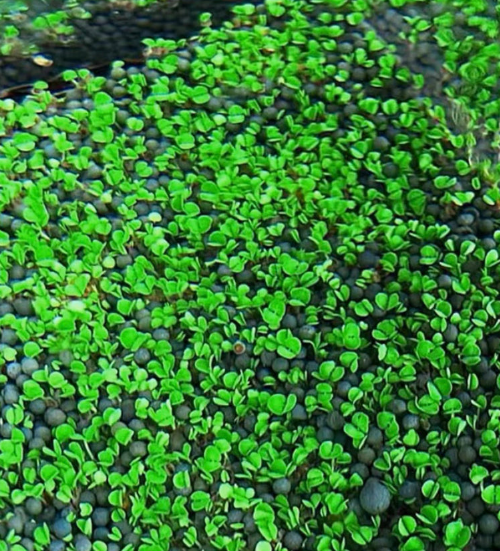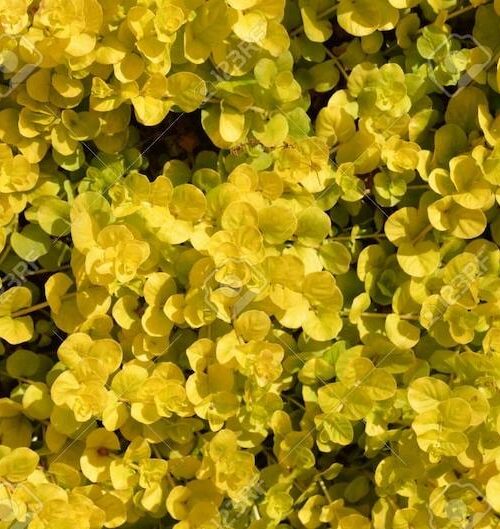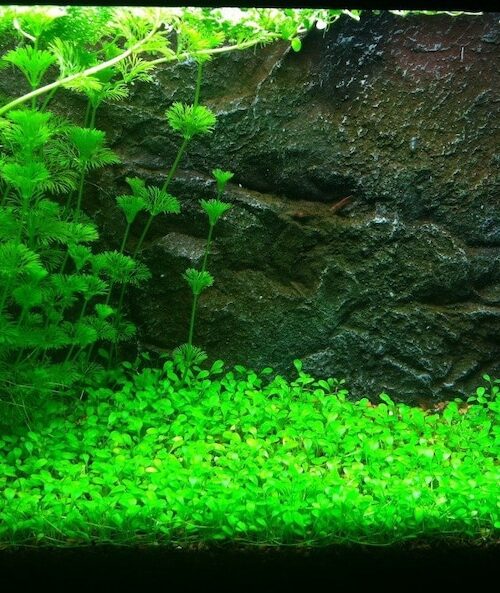Aquascaping is an art form that combines nature, design, and aquatic life. Creating a beautiful, thriving aquascape is not only visually satisfying but also enhances the overall health and well-being of your aquarium. However, maintaining a healthy and thriving aquascape takes more than just planting a few plants and adding water. It requires attention, care, and understanding of the needs of both plants and aquatic creatures.
In this blog post, we’ll dive into essential tips for maintaining a thriving aquascape, with a focus on keeping your aquarium plants healthy and vibrant.
1. Choose the Right Plants for Your Setup
The foundation of any successful aquascape starts with selecting the right plants. Whether you opt for low-tech, mid-tech, or high-tech plants, choosing plants that match your aquarium’s conditions is critical.
-
Low-Tech Plants: These plants are perfect for beginners or those who prefer minimal maintenance. They thrive without the need for CO₂ injection, making them ideal for aquariums with low light levels. Some popular low-tech plants include Java Fern, Anubias, and Cryptocoryne.
-
Mid-Tech and High-Tech Plants: These plants require CO₂ injection and more controlled lighting to grow at their best. Plants like Hemianthus callitrichoides (HC), Rotala, and Monte Carlo are great choices for aquascapes with high-tech setups. They provide vibrant color and intricate textures, but they need a well-maintained environment to thrive.
When selecting your plants, make sure they are compatible with each other in terms of light, temperature, and nutrient requirements. This balance will set the foundation for your aquascape’s success.
2. Lighting: The Key to Healthy Growth
Lighting plays a crucial role in the health of your aquarium plants. Proper lighting encourages photosynthesis, which is essential for plant growth. However, the intensity and duration of light required depend on the type of plants you have.
-
Low-Tech Plants: These plants typically require less light. Too much light can lead to algae growth, so a light cycle of 6-8 hours a day is ideal. Use low-wattage bulbs or LED lights designed for low-tech setups.
-
Mid-Tech and High-Tech Plants: These plants thrive under stronger lighting conditions, often requiring 8-12 hours of light per day. High-intensity light ensures healthy growth, but it’s important to avoid overexposure to prevent algae issues. Using a timer to regulate the light cycle can help maintain consistency.
When setting up your lighting, consider the plant’s natural habitat. Most aquatic plants are accustomed to dappled or filtered sunlight, so try to mimic this natural environment.
3. CO2 Injection: Essential for High-Tech Plants
For mid-tech and high-tech plants, CO₂ injection is essential for their growth. CO₂ is a vital component of photosynthesis, and when it’s available in adequate amounts, plants can grow more vigorously, producing lush greenery and vibrant colors.
-
CO2 Systems: You can choose between pressurized CO₂ systems or liquid carbon solutions. Pressurized systems are more effective but require regular maintenance. Liquid carbon is easier to manage but may not provide the same level of CO₂ as pressurized systems.
-
Monitoring CO2 Levels: Too much CO₂ can cause harm to both your plants and aquatic life, so it’s essential to monitor CO₂ levels carefully. A drop checker or CO₂ test kit can help you keep track of CO₂ concentration and ensure your aquarium remains balanced.
4. Proper Fertilization for Healthy Growth
Plants need nutrients to grow, and while fish waste and natural decay can provide some nutrients, most aquascapes will require additional fertilization to thrive.
-
Macro and Micronutrients: Plants need macronutrients (nitrogen, phosphorus, potassium) and micronutrients (iron, manganese, copper, etc.) for healthy development. You can provide these nutrients through liquid or substrate fertilizers. Be mindful of the nutrient levels—too many can cause algae, while too few can stunt plant growth.
-
Fertilizer Types: Liquid fertilizers are easy to apply and allow you to control the nutrient levels in the water column. Substrate fertilizers, such as root tabs, provide slow-release nutrients directly to plant roots. A combination of both is often ideal for ensuring a well-rounded nutrient supply.
-
Dosage: Follow the recommended dosages on the fertilizer packaging. Overfertilizing can lead to algae blooms and unhealthy water conditions.
5. Maintain Water Quality
Water quality is a critical factor in keeping both your plants and aquatic animals healthy. Plants rely on good water conditions to absorb nutrients and grow properly. Regular water changes and monitoring key water parameters will help maintain a thriving aquascape.
-
pH: Most aquarium plants prefer a pH between 6.5 and 7.5. Test the pH regularly and make adjustments if necessary, especially if you have high-tech plants that require stable conditions.
-
Temperature: Different plants have varying temperature preferences. Generally, a temperature range of 22-28°C (72-82°F) is suitable for most aquarium plants.
-
Hardness: Both the hardness (GH) and alkalinity (KH) of your water can affect plant health. Soft water (low GH) is ideal for many aquascaping plants, while hard water can be more suitable for others. Ensure your plants’ requirements align with your aquarium’s water hardness.
-
Ammonia and Nitrites: Regularly test for ammonia and nitrites, especially in new aquariums. High levels of these compounds can harm plants and fish. Always perform regular water changes and ensure your filter is working efficiently.
6. Pruning and Maintenance
To keep your plants healthy and your aquascape looking neat, regular pruning and maintenance are necessary.
-
Pruning: Trim overgrown plants to maintain a balanced layout and prevent one species from overtaking the others. Regular pruning also encourages new growth and helps maintain a clean and tidy aquascape.
-
Removing Dead Leaves: Remove any decaying or dead plant matter from the aquarium to prevent excess organic waste, which can contribute to poor water quality and algae growth.
-
Replanting: Over time, some plants may require replanting or dividing to keep them healthy. Gently remove the plant, trim any damaged roots, and replant it in nutrient-rich substrate or position it where it can thrive.
7. Control Algae Growth
Algae can quickly become a problem in any aquarium, particularly in aquascapes with high light, nutrients, and CO₂. While some algae are natural and harmless, excessive growth can disrupt the balance of your aquarium.
-
Reduce Excessive Light: Algae thrive on excess light, so be mindful of your light cycle and intensity. Ensure your plants are receiving just the right amount of light.
-
Nutrient Control: Overfertilization can fuel algae growth. Keep a close eye on your plant’s nutrient needs and avoid excess feeding.
-
Algae-Eating Fish: Consider adding algae-eating fish like Otocinclus or Amano shrimp to help keep algae in check naturally.
Maintaining a thriving aquascape requires careful attention to your plants’ needs, from selecting the right species to providing the proper lighting, CO₂, and nutrients. Regular maintenance and water quality management are essential for ensuring your plants remain healthy and vibrant. With patience, consistency, and a little knowledge, you’ll be able to enjoy a lush, thriving aquascape that is both beautiful and sustainable for years to come.
By following these essential tips, you’re well on your way to creating and maintaining a stunning underwater world. Happy aquascaping!

![Small pair of leaves [water grass seed]](https://aquascapy.com/wp-content/uploads/2025/04/QQ-20230507204913_720x_7a4c5366-cab1-4cf6-9ef0-7dfa04c88995-500x562.png)
![Golden Lloydiella-Golden Creeping Jenny [Lysimachia nummularia 'Aurea']](https://aquascapy.com/wp-content/uploads/2025/04/lysimachia-nummularia-aurea_2-500x700.jpg)
![Aponogeton Ulvaceus [Aquarium & Pond Aquatic Plant]](https://aquascapy.com/wp-content/uploads/2025/04/il_794xN.3976216171_hlg8-500x700.jpg)
![Glosso [Glossostigma elatinoides]](https://aquascapy.com/wp-content/uploads/2025/04/il_794xN.3845022931_gqrx-500x700.jpg)
![Hornwort-Coontail [Ceratophyllum Demersum]](https://aquascapy.com/wp-content/uploads/2025/04/il_794xN.3033889231_igl6-500x700.jpg)



